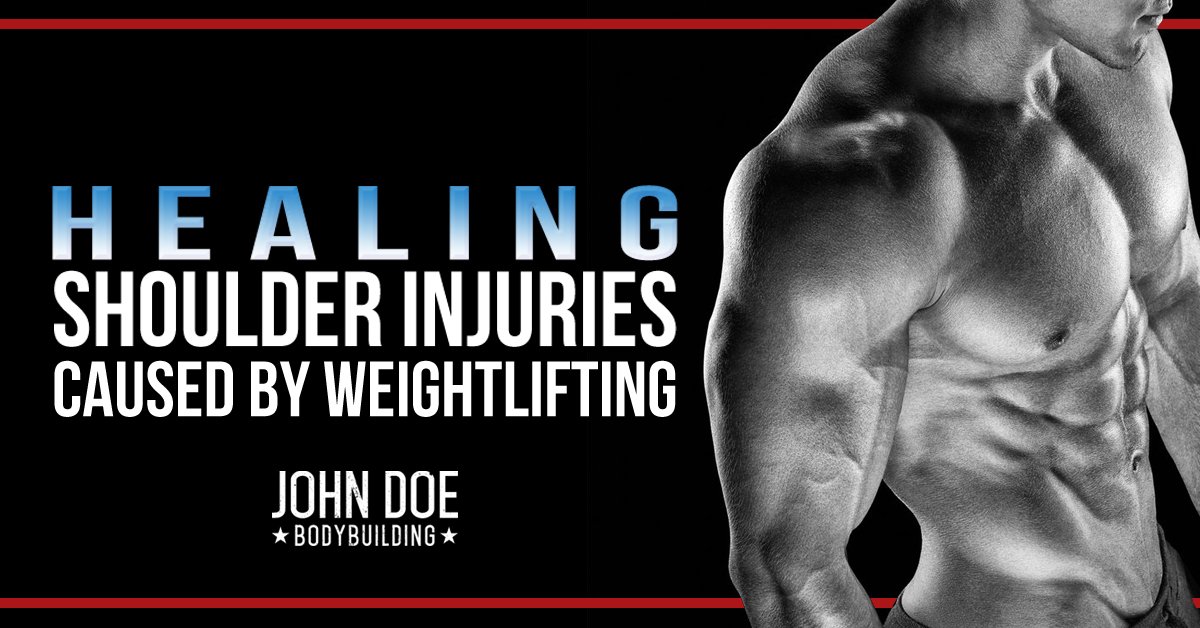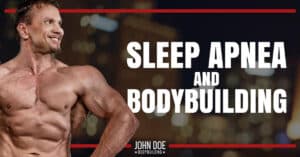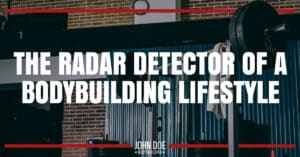If you revamp your training strategy and begin taking care of yourself then you’ll find that most injuries will eventually heal.
MOST SHOULDER INJURIES WILL HEAL IN DUE TIME IF YOU TRAIN SMARTER
Yes, sometimes surgery is required, but most of the time you can avoid this if you recognize the problem when it starts and begin proactive measures to start healing when it starts.
JDB’S TOP 10 SHOULDER HEALING TIPS
#1 – Recognize that there is an issue and stop ignoring it
#2 – Drop all heavy shoulder pressing
#3 – If you’re still able to press, press lighter weights and don’t bring the dumbbells together at the top, keep them straight up and down throughout the entire press and do partial reps (leave the top half of the rep out altogether)
#4 – warm up and/or finish off with band work rather than free-weights (if you do not have bands then use light cables on a cable cross machine)
#5 – start taking a good joint supplement daily just as you would a multi-vitamin (make this a staple supplement!)
#6 – Use the swimming pool for shoulder rotations
#7 – Use the sauna to heat up the joints prior to upper body work
#8 – Avoid sleeping on the side of the shoulder that hurts
#9 – Focus more on raises over presses
#10 – Keep elbows tucked in to the ribs on chest work to keep shoulder play out of the movement if the move aggravates the shoulders (you may also need to consider partials for chest pressing as well)
If you’re a blockhead and continue to destroy your shoulders with your ego then you’ll most likely fuck yourself up beyond any repair you could do without a Doctor’s scalpel and/or reattachment
Without good shoulders you can kiss a lot of movements goodbye. Bad shoulders will effect everything from directly training your shoulders, to your chest, pull-ups, and possibly even bicep curls.
The most common nagging shoulder pain is the AC joint impingement. This comes from years of heavy lifting, but more specifically heavy overhead pressing. Heavy overhead pressing just gets stupid as you get older because that is the one movement that brings the AC joint (where the shoulder comes into the collar bone) closest to rubbing on itself.
What happens over time is your cushion in the joint begins to wear away causing a feeling like a lack of mobility in the shoulder area. This pain often radiates through the shoulder and often feels like an arrow sticking in your shoulder. Sleeping on it only makes it worse, and often time when you awake you get a feeling of a frozen shoulder.
If this gets bad enough it begins to effect pull-down movements and pull-ups for your lat development.
I began experiencing shoulder impingement several years ago when I decided it was a bright idea to start using 130 lb dumbbells for overhead presses. I went to an orthopedic Doctor who gave me a couple cortisone shots and told me to consider having my shoulder joints scoped (an outpatient procedure where they grind away part of the joint to give it room to move more freely).
I opted against the surgery and decided not to do it until it became much worse. From this point until about 6 months later I would be limited to partial reps for chest on machines, ZERO pull-ups, and lightweight lat pull-downs.
I began taking a joint supplement every day along with a high quality fish oil. After about 6 months the issue was gone. I went back to freeweights and started doing light shoulder presses and building back up slower and smarter, knowing that I purposely had to stop myself from going too heavy on shoulder pressing.
YOUR SHOULDERS GET PLENTY OF WORK FROM CHEST PRESSES
Keep in mind that chest exercises require a lot of shoulder strength as well, and the shoulders can still get incredible development by working the chest.
A chest pressing motion won’t bring the joint rubbing on itself the same way a shoulder press would when you get near lockout. A solution to working shoulders directly and avoiding this would be to start doing partial reps where you stop about 8 inches short of lockout and keeping the weight more moderate and training for the pump.
Partial reps can keep the shoulders working by not allowing rest points during the exercise (such as during lockout). You may also find that a shoulder press machine will help and if you’re like me then even a machine is done with partial reps.
Another thing to start doing is more lateral raises. I place lateral raises over shoulder presses for this very reason of injury prevention. I know that my chest work ultimately works the shoulders as more of an all around movement than an isolation movement such as lateral raises, so I save the heavier work for chest day rather than shoulder day.
WORKING THROUGH THE INJURY RATHER THAN NOT WORKING AT ALL
I’ve always found that your better off to find ways to work through an injury and rehab it instead of totally ignoring it most of the time.
I’m sure by now you’ve seen those bands you can buy at most sporting goods stores. You know those surgical tube looking bands that you sometimes see bodybuilders using backstage to pump up at competitions? Or sometimes you see women using them or people using them for workouts at home. I have 3 different strengths of bands that I bring with me on shoulder days. I have a 20 lb band, a 30 lb. and a 40 lb.
The bands provide an excellent warm up for your rotator cuffs as well as a lighter and smoother resistance for side raises and front raises. They provide a steady resistance on the negative in a way a dumbbell does not. I will often use the bands as a warm-up or even a finisher for shoulders. You can do bent over raises, side raises, front raises, and if your shoulders are bad enough then you may even want to consider presses with them (they have handles to attach to them).
Another way to work through a shoulder injury is by swimming. Swimming provides a very smooth and steady resistance for the joints and it tends to loosen everything up. You can even sit down in a pool so your head is just above the water and begin rotating your arms around in circles for some light resistance from the water. This has always helped my shoulder pain.
Another tactic to use is heating up the joints in the sauna. When your inured your joints love heat, and the more you heat up a joint the better it feels. You may want to consider a short 10-15 minutes in the sauna before beginning the workout, and this can go for almost any joint injury.




Great Tips John,
I have had both my shoulders operated on and probably would have avoided them if I knew what I do now regardless years of improper form Bench Pressing has taken it’s toll. I do still train and do boxing/Muay Thai and sometimes they feel unstable what kind of assessment technique would you recommend ie: Massage, ART or maybe stimulation via machines. Thanks for your informative content keep up the good work.
Thanks
Simon
if it’s joint pain then stimulation from an ultrasound or tens unit at minimum. Massages will do nothing for joints, only muscles. Take Joyful joints on a daily basis man, best joint supplement I’ve used yet. Working the shoulder slowly in different planes of motion can help too, look into yoga classes on occasion, they have helped me out tremendously
Hey John,
I am 18 years old and have been training for a good 3 years. I had a bicep injury 6-7 weeks ago, which I have begun rehabbing now. Would you recommend me to take Joyful Joints? What other vitamins or supplements could I take to speed up my recovery if any?
Appreciate any help,
Thanks John.
yes, definitely joyful joints. If you do not own a tens unit then buy one, they’re great at shocking the muscles and getting rid of scar tissue buildup. That’s the biggest thing you nee to be careful up because then it’ll become a mobility issue of the forearm rotation. I had to have a physical therapist do a lot of work to me to break up old scar tissue from bicep tendon injuries. I have an article about to come out about this, all about bicep training and injuries
I have trained 32 years since I was 16 & have recently torn two rotator cuff tendons in my left shoulder. I am seeing a physio weekly, stopped all overhead & bench work. Gradually nursing it back but it will take another 6 months I expect.
The injury occured two months ago putting an 80lb weight vest on overhead in an awkward position.
I expect 100% recovery and am using no painkillers, nsaids or cortisone at this stage.
I am using Turmeric & Black Pepper, raw ginger & may use DMSO later.
thanks for the info, Turmeric is something I haven’t used before
John, great article. I had a should injury in 2.013 that only fully healed in 2.015 when I followed most of these tips, especially #10 (ie close grip bench press). If only you had wrote this a bit earlier I would have been spared some pain. Any way I will keep this as reference.
Thanks.